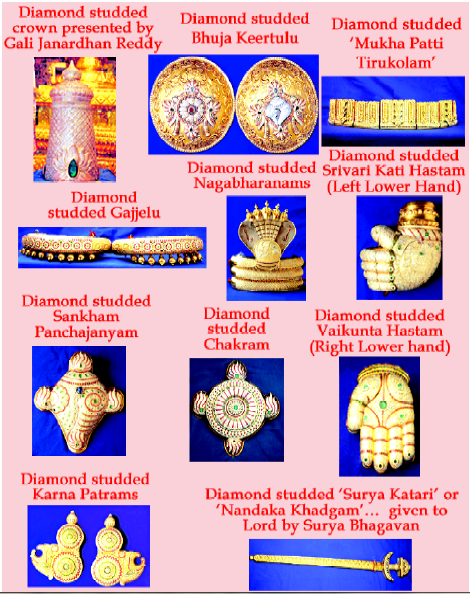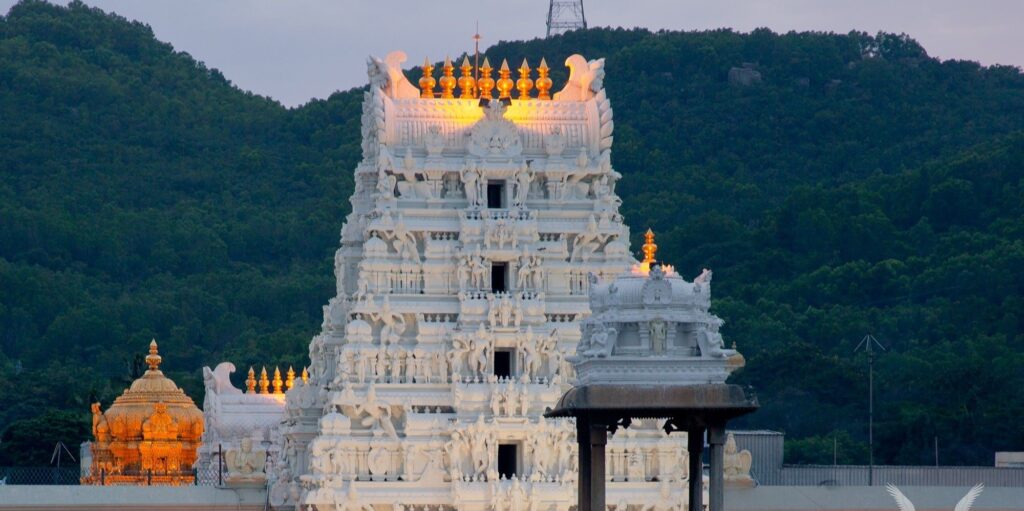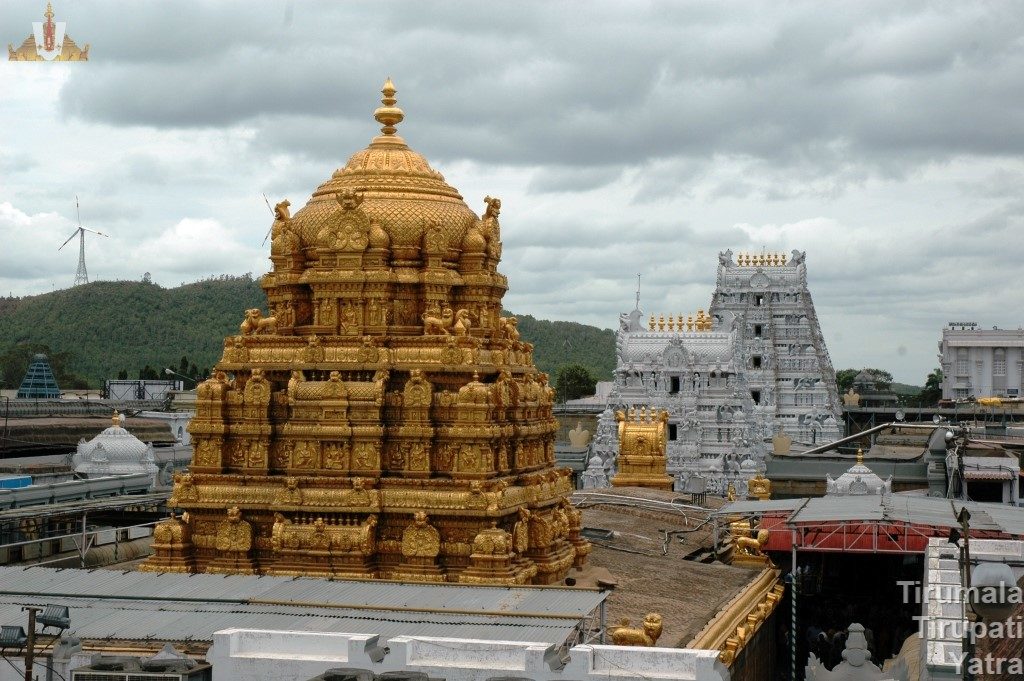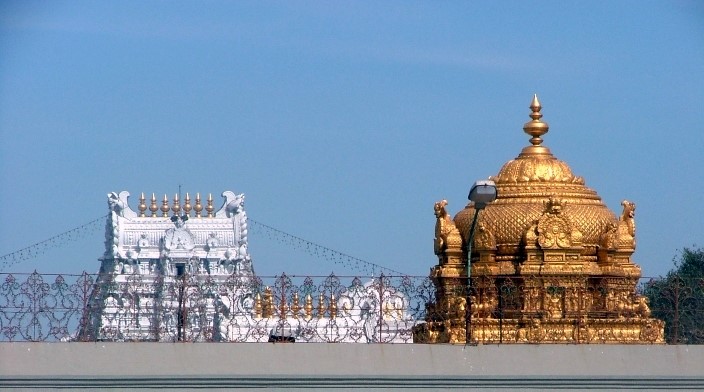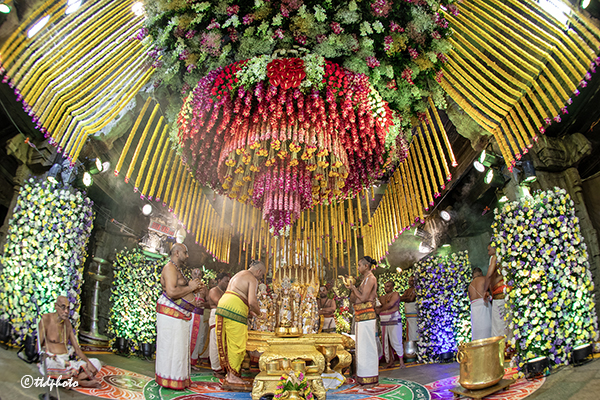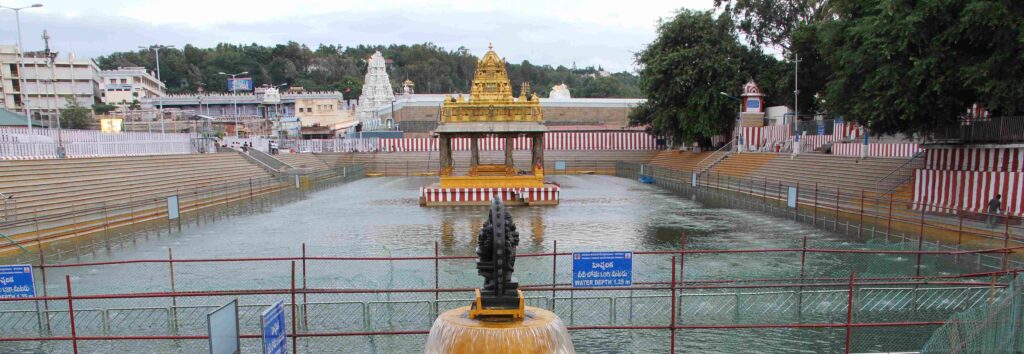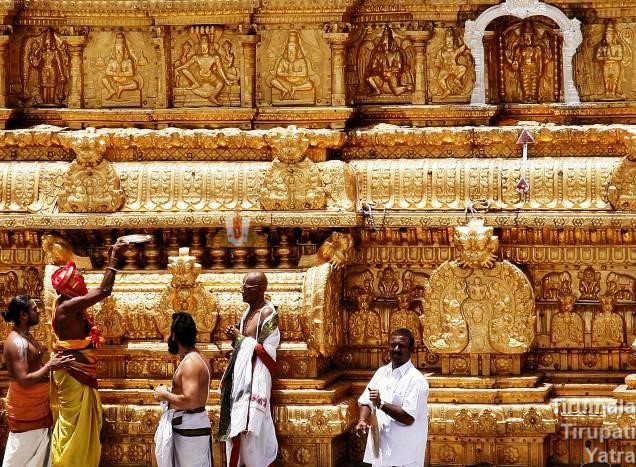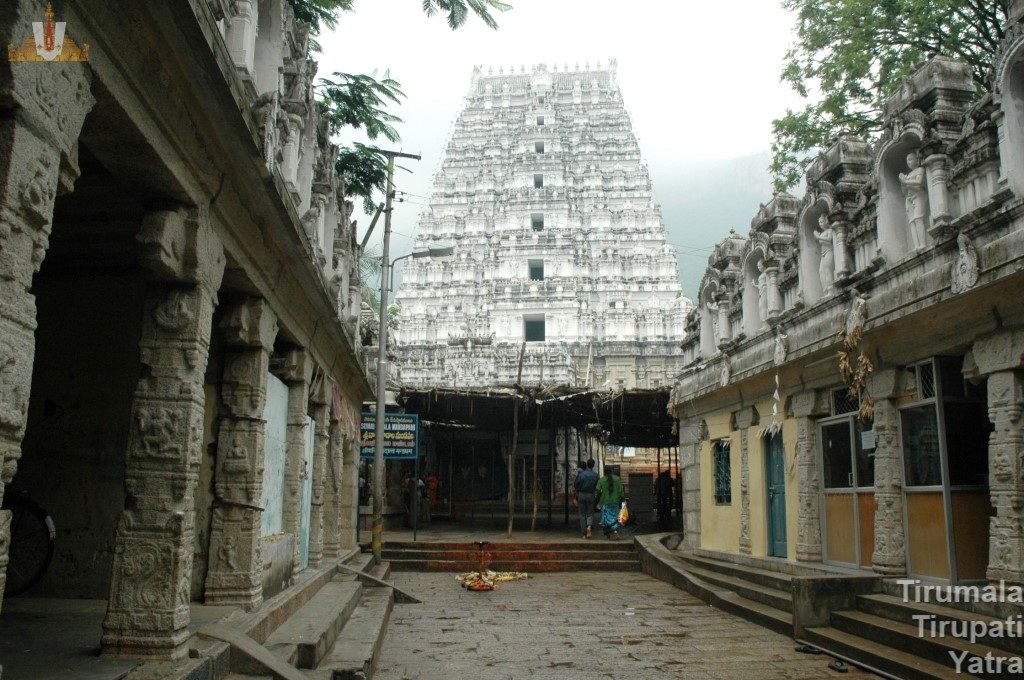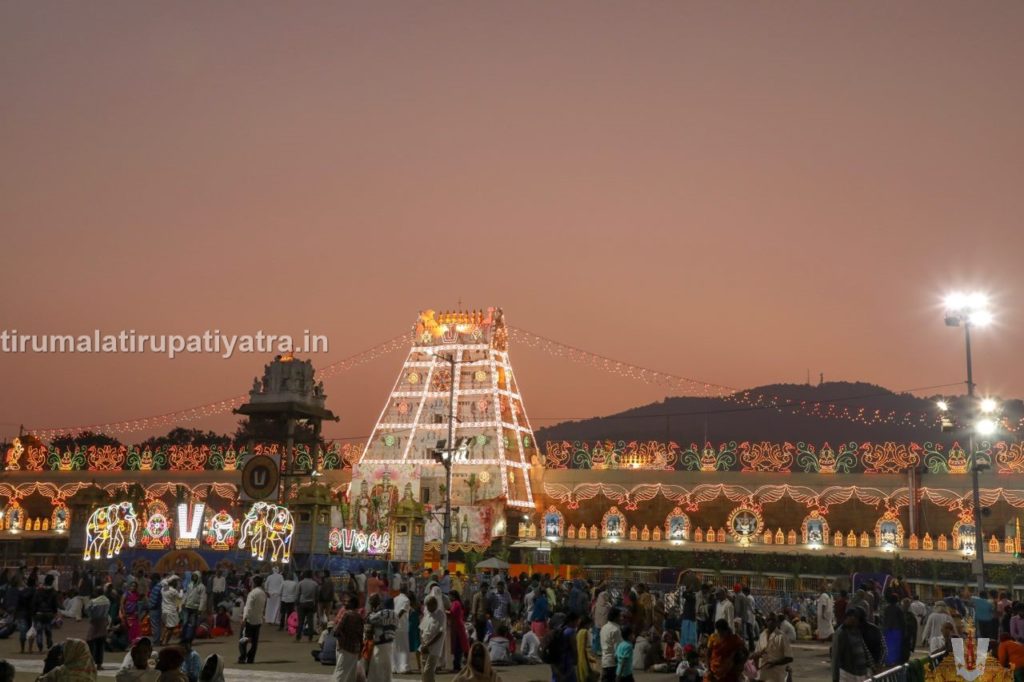Ornaments of Tirupati Balaji / Ornaments of Lord Venkateswara Let us try to know the names of the Divine Jewellery that adores the Chief Idol. 1. Golden seat under the Lotus Feet (Padma Peetham) 2. Golden covers for the Lotus Feet 3. Golden Garment (Peethambaram) 4. Golden sword by name Surya Kattari 5. Golden cover Read More
Tag: Tirupati Balaji
TIRUMALA (Tirupati, A.P) is a universally acclaimed pilgrim center of India. Here at Tirumala, we find the ‘Swayam Vyaktha’ or ‘Swayambhoo’ (self-formed or self emerged form) image of Lord Venkateswara who is called Tirupati Balaji
Sri Venkateswara Swamy (the Chief Idol), Tirumala
The Chief Idol – Sri Venkateswara Swamy, Tirumala (Tirupati) The Self-Emerged Idol of Lord Venkateswara is standing on a golden lotus base. Have a good look at the Lotus Feet of Lord Venkateswara. He has silk robes. The dangling garlands are further beautifying the silk robes. Near Lord’s naval there is a sword by the Read More
5 Idols of Tirupati Balaji – Pancha Berams
Pancha Berams of Tirupati Balaji Lord SRINIVASA is the heavenly Wishing Tree (kalpa taruvu) to those who yearn for Him, gold to those who hold his hand, advance honorarium to those who worship Him, a diamond on hand to those who serve Him, the Ultimate God to those who conceive of Him, fulfiller of desires Read More
Importance of Tirumala Hills
Tirumala Hills Some temples are situated on the banks of rivers. Some can be seen in the forests. Some others are on the mountain tops and others are in caves. The temple of Sri Venkateswara is in a mountainous forest area. Both the Hill and the river have become sacred on account of Swami’s presence. Read More
Snapana Mandapam (Mandapam of Holy Ablutions)
Snapana Mandapam As you enter through Golden doors you come across, not very much illuminated, a 27 feet quadrangular mandapam. This (Snapana Mandapam) has four pillars in the middle portion. Sculptured figures of Balakrishna, Yoga Narasimha, Sri Krishna Kaliya Mardhana, etc., can be seen on these pillars. It is known as “Tiruvilan Koil”, a Tamil Read More
Tirupati Balaji – Swami Pushkarini
The article “Swami Pushkarini – The Path for Salvation” published in Sapthagiri Magazine by “Sri M.R.K. Sateesh Babu” Swami Pushkarini Swami Pushkarini is a sacred lake located on Venkatachala Mountain adjacent to Ananda Nilayam where the deity resided after he arrived from heaven on his divine vehicle. Of the seven lakes in Trilokas, Swami Pushkarini Read More
Significane of Ananda Nilaya Vimana
Ananda Nilaya Vimana The word “Vimana” means to house the lofty image of the Supreme being. In the word “Vimanam”, the alphabet ‘ma’ means an object which is measured or made in various ways. The prefix ‘vi’ denotes “vishesha” which signifies the image. So, the word itself, from its etymological aspects carries a noble and Read More
Sri Venkateswara Swamy Padala Mandapam
Padala Mandapam The Seven Hills of Tirumala are as sacred as the Vedas. The holy Vedic hymns are their stones. The root of the footpath leading to the top of these hills, Alipiri, is the pedestal of the seven hills. A pilgrim takes the first step of the journey to the holy abode of the Read More
Tirupati Balaji – Dhruva Bera – Tirumala Temple
Tirupati Balaji The main Deity famously known as Tirupati Balaji is also termed mula virat (Moola Virat), Dhruva Murthy, Dhruva Beram, and Mula beram. (moola beram). This idol of Salagrama stone self-manifestation of the Lord wearing a disc and conch in the sanctum sanctorum of Ananda Nilaya. It is about 8 feet high. The Dhruvabera Read More
